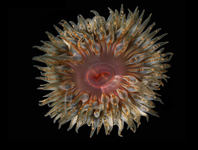Abstract
Gastrotrichs are a permanent and common element of meiofauna communities. They inhabit wide range of aquatic and semi-aquatic niches, including a variety of anthropogenic habitats, such as the sand filters of a cold marine mesocosm (Parent et al. 2001) or palm houses (e.g. Kolicka et al. 2013), and extreme natural habitats like hot springs (Guerne 1888) or hydrothermal vent zones (Kieneke & Zekely 2007).
References
Balsamo, M., Grilli, P., Guidi, L. & d’Hondt, J.-L. (2014) Gastrotricha: biology, ecology and systematics: families Dasydytidae, Dichaeturidae, Neogosseidae, Proichthydiidae. In: Dumont, H.J.F. (Ed.), Identification Guides to the Plankton and Benthos of Inland Waters. 24. Backhuys Publishers, Margraf Publishers GmbH: Weikeirsheim, Germany, pp. 1–187.
Bielańska-Grajner, I. & Cudak, A. (2014) Effects of salinity on species diversity of rotifers in anthropogenic water bodies. Polish Journal of Environmental Studies, 23, 27–34.
Bielańska-Grajner, I., Cudak, A., Biała, A., Szymańczak, R. & Sell, J. (2014) Role of spatial and environmental factors in shaping the rotifer metacommunity in anthropogenic water bodies. Limnology, 15, 173–183.
https://doi.org/10.1007/s10201-014-0428-1
Ehrenberg, C.G. (1830) Organisation, Systematik, und geographisches Verhältnis der Infusionstierchen. F. Dümmler, Berlin, 108 pp.
https://doi.org/10.5962/bhl.title.2077
Guerne, J. (1888) Campagnes scientifiques du Yacht monégasque l’Hirondelle, troisième année 1887. [Scientific surveys of the Monaco Yacht Hirondelle, third year 1887]. Paris Gauthier-Villars, 10 (26), 72–78.
Halabowski, D., Sowa, A. & Krodkiewska, M. (2018) Inland coal mine settling pond as a habitat for the brackishwater plant Ruppia maritima, 66, 301–308.
http://dx.doi.org/10.3161/15052249PJE2018.66.3.009Kieneke, A. & Zekely, J. (2007) Desmodasys abyssalis sp. nov. – first record of a deep-sea gastrotrich from hydrothermal vents. Marine Biodiversity Records, 1 (88), 1–7.
Kisielewski, J. (1981) Gastrotricha from raised and transitional peat bogs in Poland. Monografie Fauny Polski, 11. Polska Akademia Nauk, Kraków, 143 pp.
Kisielewski, J. (1986) Freshwater Gastrotricha of Poland. VII. Gastrotricha of extremely eutrophicated water bodies. Fragmenta Faunistica, 30, 267–295.
https://doi.org/10.3161/00159301FF1986.30.16.267
Kisielewski, J. (1991) Inland–water Gastrotricha from Brazil. Annales Zoologici, Warszawa, 43, 1–168.
Kisielewski, J. (1997) Brzuchorzeski (Gastrotricha). Fauna Słodkowodna Polski, Zeszyt 31. Wydawnictwo Uniwersytetu Łódzkiego, Łódź, 157 pp.
Kolicka, M., Dabert, M., Dabert, J., Kånneby, T. & Kisielewski, J. (2016) Bifidochaetus, a new Arctic genus of freshwater Chaetonotida (Gastrotricha) from Spitsbergen revealed by an integrative taxonomic approach. Invertebrate Systematics, 30, 398–419.
https://doi.org/10.1071/IS16001
Kolicka, M., Jankowska, E. & Kotwicki, L. (2015) Baltic Sea Gastrotricha – one new species and one new record of Chaetonotida from Poland. Zootaxa, 4027 (4), 487–508.
https://doi.org/10.11646/zootaxa.4027.4.2
Kolicka, M., Kisielewski, J., Nesteruk, T. & Zawierucha, K. (2013) Gastrotricha from the Poznan Palm House – one new subgenus and three new species of freshwater Chaetonotida (Gastrotricha). Zootaxa, 3717 (2), 231–279.
http://dx.doi.org/10.11646/zootaxa.3717.2.7Kolicka, M., Kotwicki, L. & Dabert, M. (2018) Diversity of Gastrotricha on Spitsbergen (Svalbard Archipelago, Arctic) with a description of seven new species. Annales Zoologici, 68 (4), 609–739.
https://doi.org/10.3161/00034541ANZ2018.68.4.001
Mečnikow, E. (1865) Über einige wenig bekannte niedere Thierformen. Zeitschrift für Wissenschaftliche Zoologie, 15, 450–463.
Müller, O.F. (1773) Vermium terrestrium et fluviatilium saeu animalium infusoriorum, helminthicorum et testaceorum non marinorum, succincta historia. Heineck et Faber, Havniae et Lipsiae, 135 pp.
http://doi.org/10.5962/bhl.title.12733
Parent, S., Morion, A. & Gon, D. (2001) Are meiofauna transient or resident in sand filters of marine aquariums? Water Resources, 33 (15), 3625–3634.
Sowa, A., Krodkiewska, M. & Halabowski, D. (2018) Macroinvertebrate communities on various microhabitats of a saline coal mine settling pond. Oceanological and Hydrobiological Studies, 47 (1), 50–59.
https://doi.org/10.1515/ohs-2018-0006
Tongiorgi, P., Fregni, E. & Balsamo, M. (1999) Gastrotricha from Italian brackish environment with description of a new species of Chaetonotus. Journal of the Marine Biological Association of the United Kingdom, 79, 585–592.
https://doi.org/10.1017/S0025315498000757
Węsławski, J.M., Kryl-Stroszewska, L., Piwowarczyk, J., Urbański, J., Warzcha, J., Kotwicki, L., Włodarska-Kowalczuk, M. & Wiktor, J. (2013) Habitat modelling limitations – Puck Bay, Baltic Sea – a case study. Oceanologia, 55 (1), 167–183.
http://doi.org/10.5697/oc.55-1.167

